quiko QK-CE220RL4 Manuel utilisateur
- Catégorie
- Ouvre-porte
- Taper
- Manuel utilisateur

QK-CE220RL4
CONTROL BOARD FOR 1 230V MOTOR
IMPORTANT NOTICE:
This user manual can be used also for the same version of control board
for 110V motors. Item code of the board becomes QK-CE110RL4 and:
- all 230/220V within this manual to be read as 110V
- F1 fuse is 10A
- QK-CE110RL4 control board is equipped with a 110V transformer
720/8
48)41
E
N
G
L
I
S
H

www.quikoitaly.com 1 of 12
BOARD LAYOUT
BOARD’S COMPONENTS
AButton A
BButton B
CButton C
DButton D
F1 250 VAC power fuse 5A
F4 Resettable fuse 24V 1.6A
F5 Resettable fuse 24V 0.6A
A B
Ground terminals
V1 Primary varistor
V2 Secondary varistor
1 to 20 Terminal block pins
IMPORTANT
RESETTABLE FUSES
AFTER SHORT-CIRCUIT
TURN OFF THE CONTROL
BOARD. REMOVE THE
SHORT-CIRCUIT. WAIT FOR
60 SECONDS OR MORE.
TURN ON THE CONTROL
BOARD.
F4/F5
EXTERNAL PHOTOCELL 24 VDC POWER
SUPPLY TYPE PIN CONFIG.
PARAMETER
TRANSMITTER
8 + 10 - N.C.
X X E3
RECEIVER 3 8
INTERNAL PHOTOCELL 24 VDC POWER
SUPPLY TYPE PIN CONFIG.
PARAMETER
TRANSMITTER
8 + 10 - N.C.
X X E4
RECEIVER 4 8
OTHER INPUTS TYPE PIN CONFIG.
PARAMETER
START – OPEN ONLY – CLOSE ONLY N.O. 1 8 E1
PEDESTRIAN – OPEN ONLY –
CLOSE ONLY N.O. 7 8 E7
STOP N.C. 2 8 E2
CLOSING LIMIT SWITCH N.C. 5 8 E5
OPENING LIMIT SWITCH N.C. 6 8 E6
N.C. Normally Closed
N.O. Normally Open
INPUTS CONNECTION OUTPUTS CONNECTION
POWER SUPPLY CONNECTION
MOTOR CLOSE COMMON OPEN
MOTOR 13 14 15
24V FLASHING LAMP
(20W) PINS
11 12
24VDC (150 mA)
PINS
810 -
230 VAC POWER SUPPLY PINS
19 20
QK-ELOCKM → Optional module for 12V electric lock
QK-SMARTM → Optional module for external relays

BUTTONS
@ A Scrolls menu from A1 to
P2
@ B Scrolls menu from P2 to
A1
@ C Increases value or set SI
(means: ON or ENABLED).
@ D Decreases value or set no
(means: OFF or DISABLED).
www.quikoitaly.com 2 of 12
INPUT/OUTPUT CONNECTIONS
FUNCTION SUMMARY
Display Report
St Stop.
FH External photocell +
Internal photocell.
tC External photocell
mode 1.
td External photocell
mode 2.
tA Internal photocell.
oP Open Only.
CL Close Only.
Eo QK-SMARTM
command N.O.
1H Opening limit switch +
Closing limit switch.
FA Opening limit switch.
Normally Closed.
FC Closing limit switch.
Normally Closed.
LA Opening limit switch.
Normally Open.
LC Closing limit switch.
Normally Open.
L2 Recovery Loop is
running.
- Remote key is
pressed.
1t Photocells test error.
7A
Motor has detected
an obstacle during the
standard working
time.
8A
Motor has detected
an obstacle during the
slowdown working
time.
9A Motor is in thermal
protection state.
FF The radio memory is
full.
Motor Setting
DISPLAY DEFAULT @ C
MAX
@ D
MIN DESCRIPTION
A1 30
sec
99
sec
00
sec Standard working time
A2 10
sec
99
sec
00
sec Slowdown working time
A3 0.1
sec
1.5
sec
0.1
sec Start up time
A5 710 1Standard force
A6 810 1Slowdown force
A7 NO
(DISABLED) 99 - NO 0
Standard obstacle
detection threshold.
During opening and
closing, for the standard
working time, the display
shows the motor stress.
A8 NO
(DISABLED) 99 - NO 0
Slowdown obstacle
detection threshold.
During opening and
closing, for the slowdown
working time, the display
shows the motor stress.
A9 12 50 NO
Motor brake in
centiseconds after
activation of limit switch.
Useful to avoid gate
getting stuck due to
inertia. Set to no to
disable.
General Functions
DISPLAY DEFAULT @ C
MAX
@ D
MIN DESCRIPTION
F0 10
sec
99
sec
00
sec
Pause time.
To disable hold down @ C
button until display shows
5t
F1 7
sec
A1
sec
0
sec
Pedestrian working time.
It is the motor working
time during a pedestrian
working cycle.
F3 0.0
sec
5.0
sec
00
sec Pre-blinking time
F5 NO
(OFF)
SI
(ON)
NO
(OFF) Step-by-step function
F6 NO
(OFF)
SI
(ON)
NO
(OFF) Community mode
F8 SI SI NO
Photocells logic:
SI→Standard logic
no→Reverse logic
L0 NO
(OFF)
SI
(ON)
NO
(OFF) Electric-lock
L1 00
min
10
min
00
min
Cold winter function. This
function is useful in
countries where the
winter is extremely cold.
L2 NO
(OFF)
SI
(ON)
NO
(OFF)
Recovery loop function.
This function is useful to
avoid motor lock due to
gate inertia.
t1 NO
(OFF)
SI
(ON)
NO
(OFF) Photocells test
t2 SI
(ON)
SI
(ON)
NO
(OFF)
Motor thermal protection
test
Courtesy Functions
DISPLAY DISPLAY @ CDESCRIPTION
d0 no Set Up
To restore default setting hold
down @ C button until display
shows --
P1 __ X
When a start command is
received the control board
starts an automatic procedure
to acquire the gate working
times.
Terminal Block Settings
DISPLAY @ C@ DDESCRIPTION
E1 ↓ ↑
no = Disabled.
Go = Start N.O. (DEFAULT)
oP = Open only N.O.
CL = Close only N.O.
Eo = QK-SMARTM command N.O.
E2 ↓ ↑ no = Disabled. (DEFAULT)
St = Stop N.C.
E3 ↓ ↑
no = Disabled. (DEFAULT)
tC = External photocell N.C.
tD = same like tC but with
possibility to start the opening
even If external photocell is
detecting an obstacle.
E4 ↓ ↑ no = Disabled. (DEFAULT)
tA = Internal photocell N.C.
E5 ↓ ↑
no = Disabled.
FC = Closing limit switch N.C. (DEFAULT)
LC = Closing limit switch N.O.
E6 ↓ ↑
no = Disabled.
FA = Opening limit switch N.C.(DEF.)
LA = Opening limit switch N.O.
E7 ↓ ↑
no = Disabled.
PE = Pedestrian N.O. (DEFAULT)
oP = Open only N.O.
CL = Close only N.O.
Eo = QK-SMARTM command N.O.
N.O. = Normally Open N.C. = Normally closed DEFAULT VALUE
Radio Functions
DISPLAY @ CDESCRIPTION
r0 1...2... Delete
To erase a code: Hold down @ C
button on the selected code until
the display turns off **
r1 =_ Save To save a remote key: Hold down a
remote key. When the display
shows _, push down @ C button on
the control board. The control board
holds up to 99 codes.
r1 →Start
r2 →Stop
r3 →Pedestrian start
r4 →Fast closure start
r2 =_ Save
r3 =_ Save
r4 =_ Save
r5 no Delete To erase all codes:
Hold down @ C button until display
stops flashing SI

www.quikoitaly.com 4 of 12
INPUT/OUTPUT CONNECTIONS
19 X20
NL
230 VAC POWER SUPPLY START
12345678910 11 12
12345678910 11 12
STOP
PEDESTRIAN START
13 14 15
M
CAPACITOR
COM.
OPEN
CLOSE
12345678910 11 12
FLASHING LAMP
24 V – MAX
30W
N.O.N.C.
230 VAC MOTOR
NEUTRAL PHASE
CLOSING LIMIT SWITCH
12345678910 11 12
N.C.
12345678910 11 12
OPENING LIMIT SWITCH
N.C.
N.O.
N.C.
12345678910 11 12
12345678910 11 12
1 2 3 4 5 6 7 8 9 10 11 12
JUNCTION
12345678910 11 12
JUNCTION
1 2 3 4 5 6 7 8 9 10 11 12
Set E4 to no Set E3 to no
(4.D) DISABLED BY SOFTWARE
PHOTOCELLS RECEIVER
(4.A)
PHOTOCELLS TRANSMITTER
WITHOUT PHOTO TEST FUNCTION
(4.B)
PHOTOCELLS TRANSMITTER
WITH PHOTO TEST FUNCTION
(4.C)
DISABLED BY HARDWARE
INTERNAL PHOTOCELL EXTERNAL PHOTOCELL
The parameter t1 enables (SI) or disables (no) the test of photocells. Settings (4.A) and (4.C) require t1 set to no.
24V DC - 150mA
12345678910 11 12
INPUT/OUTPUT CONNECTIONS
N.C.
12345678910 11 12
+24V -24V
COM
+24V -24V
COM
+24V -24V
COM
+24V -24V
COM
12345678910 11 12
1 2 3 4 5 6 7 8 9 10 11 12
+24V -24V
COM
+24V -24V
COM
1 2 3 4 5 6 7 8 9 10 11 12
TEST -24V
+24V
TEST -24V
+24V
QK-ELOCKM → Optional module for 12V electric lock
QK-SMARTM → Optional module for external relays

www.quikoitaly.com 5 of 12
Stand By The gate is completely closed and the safety devices are unactivated. The control board is ready to start a working
cycle. In this state the flashing lamp is off.
Opening The gate is opening and the flashing lamp blinks quickly.
Pause During pause the motor is stopped and the flashing lamp is on.
After pause time has expired (F0) the gate starts closing.
Closing The gate is closing and the flashing lamp blinks slowly.
Stop
opening
The gate has been stopped while it was opening. A new start command begins the closing phase.
In this state the flashing lamp is off.
Stop
closing
The gate has been stopped while it was closing. A new start command begins the opening phase.
In this state the flashing lamp is off.
Types of
Input
There are two types of input: external and remote control. The external inputs are all devices (photocells, normally
closed contacts and normally open contacts) wired to the terminal blocks. Each input is programmable with a
function. The safety functions match the normally closed contacts. The other functions match the normally open
contacts. The safety functions are: stop, internal photocell, external photocell, opening limit switches N.C. and
closing limit switches N.C. The other functions are: start, pedestrian start, opening limit switches N.O. and
closing limit switches N.O. The functions of terminal block inputs are configurable by parameters E1, E2, E3,
E4, E5, E6 and E7.
A remote control input is programmable as: start, stop, pedestrian start and fast closure start. The remote
controls are configurable by parameters r1, r2, r3, r4.
The control board doesn't distinguish between the type of input but only between the functions.
Input Is
activated
An input is activated when its state changes from the standard state. For instance, a photocell is activated when
the beam from the transmitter to the receiver is interrupted. While a generic push-button or a remote key is
activated only when it is pushed down.
All these actions are recognized by the control board which shows these changes on the display.
When more inputs are activated at the same time the display shows only the most important input. The order
from the most important to the least important input is: stop 5t, internal and external photocells FH, external
photocells tC , internal photocells tA , start Go, pedestrian start PE, open only oP, close only CL,
Opening and Closing limit switches 1H, Closing limit switch N.C. FC, Opening limit switch N.C. FA, Closing
limit switch N.O. LC, Opening limit switch N.O. LA.
Start
commands
The start commands are: start, pedestrian start, open and fast closure start. They are able to start a working
cycle. The function of start commands depend on F5 and F6 parameters programming.
To know more see F5 and F6 description.
To know how the fast closure start command works see r4 description.
To know how the start command works see Standard Working Cycle.
To know how the pedestrian start command works see Pedestrian Working Cycle.
Safety
commands
The safety commands are: stop, internal photocell and external photocell.
The stop commands always stop the gate. Instead the functions of photocells depend on F8 parameter
programming. To know more see F8 description.
Standard
working
cycle
A standard working cycle begins when an input programmed as start, open or fast closure is activated and the
control board is in stand by.
The motor works for a total time of A1 plus A2 seconds during the opening and the closing. When a standard
working cycle is in progress, the pedestrian start commands are considered as a start. The working cycle is
finished when the control board returns to stand by state. This functionality can be handled by parameters
programming. The working cycle finishes when the control board returns to stand by. This functionality can be
handled by parameters F0, F5, F6.
Pedestrian
working
cycle
A pedestrian working cycle begins when a pedestrian start is activated and the control board is in stand by.
The motor works for a total time of F1 seconds during the opening and closing. The slowdown phase is skipped
during the opening and executed during the closing. The slowdown time is automatically managed by the control
board during a pedestrian working cycle. When a pedestrian working cycle is in progress, the start commands are
considered as a pedestrian start. The working cycle is finished when the control board returns to stand by state.
GLOSSARY

OB
www.quikoitaly.com 6 of 12
Standard Working
Time
The motor works for A1 seconds. After this time the motor starts the slowdown for A2
seconds. This is for both phases: opening and closing.
A1 is settable from 00 to 99 seconds.
A2 is settable from 00 to 99 seconds.
A1
Slowdown Working
Time
A2
Start Up Time A3 is the start up time of the motor. During this time the force of the motor increases
constantly until it reaches the maximum power and the obstacle detection sensor is
disabled. Each time the motor start, the first A3 seconds are the start up time.
A3 is settable from 0.1 to 1.5 seconds.
A3
Standard Force A5 is the force of the motor during the standard working time A1.
A5 is settable from 00 to 10
A5
Slowdown Force A6 is the force of the motor during the slowdown working time A2.
A6 is settable from 00 to 10
A6
Standard Obstacle
Detection Threshold
During the standard working time A1, when the motor stress is higher than A7:
The control board makes a decision in accordance with its programming as described in
SENSOR OPERATING MODE (see page 7).
When the motor is on and the standard working time is in progress, the control board
display shows the motor stress. You can use this value as a feedback value. 00 is the
minimum and 99 is the maximum. The maximum value depends on the motor and can be
lower than 99. To disable the obstacle detection sensor during the standard working time
A1 set A7 = no. To set A7 = no hold down or keep pressing button C. A7 is settable from
00 to 99. After 99 the display shows no.
A7
Slowdown Obstacle
Detection Threshold
During the slowdown working time A2, when the motor stress is higher than A8:
The control board makes a decision in accordance with its programming as described in
SENSOR OPERATING MODE (see page 7).
When the motor is on and the slowdown is in progress, the control board display shows the
motor stress. 00 is the minimum, 99 is the maximum. The maximum value depends on the
motor and can be lower than 99. To disable the obstacle detection sensor during the
slowdown working time A2 set A8 = no. To set A8= no hold down or keep pressing
button C. A8 is settable from 00 to 99. After 99 the display shows no.
A8
Motor Brake Motor brake in centiseconds after activation of limit switch. Useful to avoid gate getting
stuck due to inertia. The motor brake is settable from no (disabled) to 50 (0.5 seconds).
To set A9 = no hold down or keep pressing button D.
A9
MOTOR SETTING

www.quikoitaly.com 7 of 12
There are two sensor operating mode: Obstacle Detection and Limit switch. They are described in the table below:
Obstacle Detection Limit Switch
In this operating mode the motor changes direction. If the direction was
closure, the gate opens completely. If the direction was opening, the
gate closes for 2 seconds. After this time, it stops. A start command will
restart the closing. This functionality is active once per working cycle.
For additional times during the cycle the sensor works as a limit switch.
In this operating mode the motor finishes the
working phase: from Opening to Pause, from
Closing to Stand by.
The operating mode depends on the working phase and parameters programming. The working phases are: opening,
opening slowdown, closing, closing slowdown. The relevant parameters are: A2, A7, A8, E5, E6.
•If A7 is set to no the sensor is disabled during the standard working time. This means that it doesn't work in any
operating mode during the standard working time (A1).
•If A8 is set to no or A2 is equal to 00 the sensor is disabled during the slowdown working time. This means
that it doesn’t work in any operating mode during the slowdown working time (A2).
• If the limit switches inputs are installed (E5=FA or LA and E6=FC or LC): the sensor works in obstacle
detection mode.
• If the opening limit switch input is not installed (E6=no) and the opening is in progress: the sensor works in
obstacle detection mode during the standard working time (A1). During the slowdown (A2) the sensor works in
limit switch mode.
• If the opening limit switch input is not installed (E6=no) and the slowdown phase is disabled (A2 = 00): the
sensor works in limit switch mode during the opening.
• If the closing limit switch input is not installed (E5=no) and the closing is in progress: the sensor works in
obstacle detection mode during the standard working time (A1). During the slowdown (A2) the sensor works in
limit switch mode.
• If the closing limit switch input is not installed (E5=no) and the slowdown phase is disabled (A2 = 00): the
sensor works in limit switch mode during the closing.
• If both limit switches inputs are not installed (E5=no and E6=no): the sensor works in obstacle detection
mode during the standard working time(A1). During the slowdown working time (A2) the sensor works in limit
switch mode.
• If both limit switches inputs are not installed (E5=no and E6=no) and the slowdown phase is disabled
(A2 = 00): the sensor works in limit switch mode.
Obstacle Detection Limit Switch Disabled
Opening
E6 = FA or LA
E6 = no and A2 enabled
E6 = no
and
A2 disabled
A7 = no
Opening
Slowdown E6 = FA or LA E6 = no
A8 = no
or
A2 disabled
Closing
E5 = FC or LC
or
E5 = no and A2 enabled
E5 = no
and
A2 disabled
A7 = no
Closing
Slowdown E5 = FC or LC E5 = no
A8 = no
or
A2 disabled
SENSOR OPERATING MODE
OPERATING
MODE
WORKING
PHASE

www.quikoitaly.com 8 of 12
Automatic Closure
Time
After the opening the gate waits for F0 seconds before beginning the closing. To disable the automatic closure set
F0 = St. To set St hold down or keep pressing button C until the display shows St.
F0
Pedestrian Working
Time
It is the motor working time during a pedestrian working cycle. The slowdown phase is skipped during the opening
and executed during the closing. The slowdown time is automatically managed by the control board during a
pedestrian working cycle.
F1 is settable from 00 to A1.
F1
Pre-blinking Time Before starting the motor, the flashing lamp blinks for F3 seconds. After this time the flashing lamp still blinks and
the motor start moving.
F3 is settable from 0.0 to 5.0 seconds
F3
Start Commands
Functionality
STANDARD SETTING
F6 = no and F5 = no
During the opening :
The start commands stop the
opening.
During the closing :
The start commands stop the
closing and begin the opening.
COMMUNITY MODE
F6 = SI
During the opening :
The start commands don't have any
effect.
During the closing :
The start commands stop the closing
and begin the opening.
STEP-BY-STEP SETTING
F6 = no and F5 = SI
During the opening :
The start commands stop the gate.
During the closing:
The start commands stop the gate.
F5
F6
Photocells Logic F8 = SI → STANDARD MODE
During the opening:
If the internal photocell is activated the control board
stops the opening and starts the closing. After 3
seconds the closure is stopped and the control board
state is stop-opening. The activation of the external
photocell doesn't have any effect Instead.
During the closing:
If the external photocell is activated the control board
stops the closing and starts the opening.
The activation of the internal photocell doesn't have
any effect instead.
F8 = no → REVERSE MODE
During the opening:
While the internal photocell is activated the control board stops
the opening. When the internal photocell is deactivated the
control board continues the opening. The activation of the
external photocell doesn't have any effect instead.
During the closing:
If the external photocell is activated the control board stops the
closing and starts the opening.
If the internal photocell is activated the control board stops the
closing and waits for the opening. The opening starts only when
the internal photocell is deactivated.
F8
Before the gate starts the opening phase:
if E3 = tC : The opening cannot be starte
d if external photocell is detecting an obstacle. ← SAFER SETTING
if E3 = td : The opening can be started even if external photocell is detecting an obstacle.
Electric Lock L0 = SI → ENABLED
The electric-lock module is managed. The module
must be installed on the electric-lock socket.
L0 = no → DISABLED
The electric-lock is not managed. The module is not
installed on the electric-lock socket.
L0
Cold Winter
L1
The cold winter function is useful in countries with very cold winters. The motor is activated with the minimum
power for L1 minutes out of 10 minutes to keep the control board box and the motor warm. When the motor is
activated with the minimum power, the gate doesn't move. The function runs when the gate is completely open or
in stand-by only. When L1 is set to 00 the function is disabled. L1 is settable from 00 to 10.
Recovery Loop L2 = SI → ENABLED L2 = no → DISABLED
This function is useful to avoid motor lock due to gate inertia. This event may happen when the gate reaches the closing
or opening limit switch without slowing down. The recovery loop works when a working cycle starts and the closing limit
switch is not activated. In a recovery loop the standard working time is 1 second, the slowdown working time is 240
seconds and the obstacle detection sensor is disabled. The recovery loop ends when a opening or closing limit switch is
activated. This function works only if E5 , E6 , A2 and L2 are enabled.
L2
Photocells Test t1 = SI → ENABLED t1 = no → DISABLED
Each time the gate starts, the control board checks the photocells. If no errors are detected the motor can be started.
Vice versa the motor cannot start and the control board display shows 1t.
t1
Motor Thermal Test
t2
t2 = SI → ENABLED t2 = no → DISABLED
Before starting a working cycle the motor is tested. When the display shows 9A the motor is in thermal
protection. This test may fail if the motor is badly connected. When the motor is in thermal protection, the
working cycle cannot be started.
GENERAL FUNCTIONS

www.quikoitaly.com 9 of 12
RADIO FUNCTIONS
Erasing a remote key Keep pressing A or B button until the display shows r0. After a few seconds the control
board starts scanning for saved codes. Each code showed is a remote key identification
number previously saved. To erase a displayed code, hold down button C until display turns
off.
r0
Saving a remote key A remote key is configurable as: start r1, stop r2, pedestrian r3 or fast closure r4. Hold
down or keep pressing A or B button on the control board until the display shows the
chosen function r1, r2, r3 or r4. After about one second, the display shows =_. Hold
down an unsaved remote key. The display shows ._. To save push down the button C on
the control board. After saving, the display shows the remote key identification number.
The control board holds up to 99 codes. If the memory is full, the display shows FF when
trying to save the remote key.
•r1 Start
The start function begins a Standard Working Cycle : The motor works for a total
time of A1 plus A2 seconds during the opening and the closing.
•r2 Stop
The stop function stops the gate.
•r3 Pedestrian
The pedestrian function begins a Pedestrian Working Cycle: The motor works for a
total time of F1 seconds during the opening and closing. The slowdown phase is
skipped during the opening and executed during the closing. The slowdown time is
automatically managed by the control board during a pedestrian working cycle.
•r4 Fast closure
During the opening: once the external photocells have been activated, the gate
starts closing after 5 seconds.
During the
pause time F0: once the external photocells have been activated, the
gate starts closing.
For safety reasons it is advisable to link this function to a remote key only when two pairs of
external photocells are installed as shown in TYPICAL INSTALLATION (see page 3).
r1 START
r2 STOP
r3 PEDESTRIAN
r4 FAST
CLOSURE
Erasing all remote
controls Keep pressing A or B button until the display shows r5. After a few seconds the control
board shows no. To erase all saved codes, hold down button C until the display stops
flashing SI (YES).
r5

Each terminal block input is programmable by a configuration parameter. The configuration parameters are E1, E2,
E3, E4, E5, E6 and E7. E1 configures the terminal block input 1, E2 configures the terminal block input 2 and so
on.
Input 1
Start – Open Only –
Close Only –
QK-SMARTM command
E1 = no → DISABLED E1 = Go or oP or CL or Eo → ENABLED
The input 1 is configurable as one of the following functions: Disabled no, Start Go, Open Only oP, Close Only
CL or QK-SMARTM Command Eo.
The QK-SMARTM Command Eo command doesn't have any effect on the gate status. It can be used in combination
with the QK-SMARTM module. For instance a light may be turned on through the key selector without activating the
gate. It is advisable to set E1 to no, if the input 1 is not used. When the input 1 is enabled and activated, the
display shows Go, oP , CL or Eo.
E1
Input 2
Stop
E2 = no → DISABLED E2 = St → ENABLED
The input 2 is configurable as Disabled no or Stop St. The Stop function matches a normally closed contact. It is
always advisable to install an external stop switch. During the installation phase it may be useful to disable E2. When
a normally closed switch is wired to the terminal block input 2, the E2 parameter is automatically set to St (Stop).
When the Stop is enabled and activated, the display shows St.
E2
Input 3
External Photocell
E3 = no → DISABLED E3 = tC → ENABLED
The input 3 is configurable as Disabled no, External Photocell mode 1 tC or External Photocell mode 2 td.
If E3 = tC the opening phase cannot be started even if the External photocell is detecting an obstacle. ← SAFER
SETTING
If E3 = td the opening phase can be started even if the External photocell is detecting an obstacle.
The External Photocell functions match a normally closed contact. It is always advisable to install the external
photocell device. During the installation phase it may be useful to disable E3. When the photocell device is wired to
the terminal block input 3, the E3 parameter is automatically set to tC (SAFER SETTING). When the External
Photocell is enabled and activated, the display shows tC or td.
E3
Input 4
Internal Photocell
E4 = no → DISABLED E4 = tA → ENABLED
The input 4 is configurable as Disabled no or Internal Photocell.
The Internal Photocell function matches a normally closed contact. t is always advisable to install the internal
photocell device. During the installation phase it may be useful to disable E4. When the photocell device is wired to
the terminal block input 4, the E4 parameter is automatically set to tA (Internal Photocell). When the internal
photocell is enabled and activated, the display shows tA.
E4
Input 5:
Closing Limit Switch N.C –
Closing Limit Switch N.O.
E5
E5 = no → DISABLED E1 = FC or LC → ENABLED
The input 5 is configurable as one of the following functions: Disabled no, Closing limit switch N.C. FC or Closing
limit switch N.O. LC. The Closing limit switch N.C. matches a normally closed contact. The Closing limit switch N.O.
matches a normally open contact. If the input 5 is enabled and activated, the display shows FC or LC.
Input 6
Opening Limit Switch N.C –
Opening Limit Switch N.O.
E6
E6 = no →DISABLED E6 = FA or LA → ENABLED
The input 6 is configurable as one of the following functions: Disabled no, Opening limit switch N.C. FA or
Opening limit switch N.O. LA. The Opening limit switch N.C. matches a normally closed contact. The Opening limit
switch N.O. matches a normally open contact. When the input 6 is enabled and activated, the display shows FA or
LA.
Input 7
Pedestrian – Open Only –-
Close Only –
QK-SMTARTM command
E7 = no → DISABLED E7 = PE or oP or CL or Eo → ENABLED
The input 7 is configurable as one of the following functions: Disabled no, Pedestrian Start PE, Open Only oP,
Close Only CL or QK-SMARTM Command Eo.
The QK-SMARTM Command Eo command doesn't have any effect on the gate status. It can be used in combination
with the QK-SMARTM module. These functions match a normally open contact. It is advisable to set E7 to no, if
the input 7 is not used. When the input 7 is enabled activated, the display shows PE, oP, CL, or Eo.
E7
www.quikoitaly.com 10 of 12
TERMINAL BLOCK SETTINGS

INR
www.quikoitaly.com 11 of 12
Default Restore To restore the factory default setting, keep pressing button A or B until the display shows d0.
After a few seconds the control board shows no. To execute hold down button C until the
display shows --. The factory default has been set and the control board state is in stand by
state. This function doesn't have any effect on radio programming.
d0
Motor
Working Time
Programming
P1 is a semi-automatic procedure to acquire the working time parameters. The working time
parameters are A1, A2 and F0. In other words, after this procedure the standard working
time, the slowdown working time of the motor and the pause time are acquired by the control
board. Before beginning this procedure, check that all safety devices are connected, the control
board is in stand by state, and the sense of rotation of the motor is correct. To begin this
procedure hold down or keep pressing button A or B until the control board display shows P1.
After a few seconds the control board display shows __.
After pressing a start input, the procedure will start. This procedure is divided into 3 steps: A1,
A2 and F0. In each step the linked parameter is programmed. During the whole programming
procedure the obstacle detection sensor is disabled.
P1 → __ The control board is ready to start the motor working time programming.
To go to A1 press any start input.
A1
The standard working time of the motor(A1) is being programmed.
The gate is opening. To change the programming phase:
If opening limit switch is not installed (E6 = no):
•To go to A2 press any start input.
If opening limit switch is installed (E6 = SI):
•To go to A2 press any start input.
•To go to F0 wait until the gate reaches the opening limit switch. An
extra time of 30 seconds will be added to A1.
A2
The slowdown working time of the motor (A2) is being programmed.
The gate is slowing down. To change the programming phase:
If opening limit switch is not installed (E6 = no):
•To go to F0 press any start input.
If opening limit switch is installed (E6 = SI):
•To go to F0 wait until the gate reaches the opening limit switch. An
extra time of 45 seconds will be added to A2.
F0
The pause time is being programmed (F0).
The gate is stopped. The flashing lamp is on. After a few seconds the control
board display shows the counting time. To finish the programming press any
start input and wait until the gate is completely closed.
P1
COURTESY FUNCTIONS

9
DECLARATION OF COMPLIANCE
Manufacturer: Quiko Italy
Via Seccalegno,19
36040 Sossano (VI)
Italia
declares under his own responsibility that the product:
Control board QK-CE220RL4
complies with the main safety requirements issued by the following directives:
Radio Sets - 1999/05/EC ;
Low Voltage - 2006/95/EC ;
Electromagnetic Compatibility - 2004/108/EC
and any revisions thereof, and complies with the provisions that implement said directives in the
National Legislation of the Country of destination where the products are to be used.
Sossano, 10/11/2012
!"2!#$!"%




QK-CE220RL4
Logique de commande pour un moteur 230V
V20/2018
SW: HS2121
F
R
A
N
Ç
A
I
S

www.quikoitaly.com 1 of 11
CONNEXIONS DES SORTIES
SCHÉMA DE LA CENTRALE
ALIMENTATION ÉLECTRIQUE
MOTEUR FERME COMMUNE OUVRE
MOTEUR 13 14 15
BROCHES DE LA LAMPE
CLIGNOTANTE 24V (20W)
11 12
BROCHES 24VCC
150 mA
8 + 10 -
BROCHES ALIMENTATION 230 VCA
19 20
COMPOSANTES DE LA CENTRALE
A Bouton A
B Bouton B
C Bouton C
D Bouton D
F1 Fusible 250VCA 5A
F4 Fusible réarmable 24V 1.6A
F5 Fusible réarmable 24V 0.6A
A B
Bornes de mise à terre
V1 Varistance primaire
V2 Varistance secondaire
1 à 20 Broches du bornier
ATTENTION
FUSIBLES RÉARMABLES
APRÈS UN COURT-CIRCUIT
ÉTEINDRE LA CENTRALE
ET ENLEVER LE COURT-
CIRCUIT. ATTENDRE AU
MOINS 60 SECONDES
AVANT D'ALLUMER LA
CENTRALE
F4/F5
RADIO
ROUGE
ROUGE
NOIR
PLACER LE MODULE À L’INTÉRIEUR
DU CLIGNOTANT OU DANS LE
BOÎTIER DE L'ANTENNE POUR
AUGMENTER LA PORTÉE DU
SIGNAL RADIO
NOIR
NOIR
MOTEUR
EXPANSION FICHE
ÉLECTROSERRURE
ANTENNE
PHOTOCELLULES
EXTERNES
ALIMENTATION
24V CC TYPE BROCHE CONFIG.
PARAM.
TRANSMETTEUR 8 + 10 - N.C. X X E3
RÉCEPTEUR 3 8
PHOTOCELLULES
INTERNES
ALIMENTATION
24V CC TYPE BROCHE CONFIG.
PARAM.
TRANSMETTEUR 8 + 10 - N.C. X X E4
RÉCEPTEUR 4 8
AUTRES ENTRÉES TYPE BROCHE CONFIG.
PARAM.
START – OUVRE SEULEMENT – FERME
SEULEMENT N.O. 1 8 E1
MODE PIÉTON – OUVRE SEULEMENT –
FERME SEULEMENT N.O. 7 8 E7
STOP N.C. 2 8 E2
FIN DE COURSE FERMETURE N.C. 5 8 E5
FIN DE COURSE OUVERTURE N.C. 6 8 E6
N.C. Normalement fermé N.O. Normalement ouvert
CONNEXIONS DES ENTRÉES
ROUGE
BLANC
QK-ELOCKM →Module optionnel 12V pour électro-serrure
QK-SMARTM →Module optionnel pour relais externes

www.quikoitaly.com 2 of 11
CONNECTIONS DES ENTRÉES / SORTIES
SOMMAIRE DES FONCTIONS
Paramètres du moteur
AFFICHEUR DÉFAUT @ C
MAX
@ D
MIN DÉSCRIPTION
A1 30
sec
99
sec
00
sec Temps de travail standard
A2 10
sec
99
sec
00
sec Temps de travail au ralenti
A3 0.1
sec
1.5
sec
0.1
sec Temps de démarrage
A5 7 10 1 Force standard
A6 8 10 1 Force au ralenti
A7 NO
(DÉSACTIVÉ)
99 -
NO 0
Seuil du détecteur d'obstacle
en mode standard. Durant
l'ouverture, pour un temps
de travail standard, l'afficheur
indique l'effort du moteur A.
A8
NO
(DÉSACTIVÉ)
99 -
NO 0
Seuil du détecteur d'obstacle
en mode ralenti. Durant
l'ouverture, pour un temps
de travail au ralenti,
l'afficheur indique l'effort du
moteur A.
A9 12 50 NO
Frein moteur en centièmes de
seconde après l'activation de
la fin de course. Utile pour
éviter que le portail ne se
coince à cause de l'inertie.
Régler sur no pour
désactiver.
Fonctions générales
AFFICHEUR DÉFAUT @ C
MAX
@ D
MIN DÉSCRIPTION
F0 10
sec
99
sec
00
sec
Temps de pause.
Pour désactiver appuyer sur le
bouton
@
C
jusqu'à ce que
l'afficheur indique
5t.
F1 7
sec
A1
sec
0
sec
Temps de travail en mode
piéton. C'est le temps de
travail d'un moteur durant un
cycle en mode piéton.
F3 0.0
sec
5.0
sec
00
sec Temps de pré-clignotement.
F5 NO
(OFF)
SI
(ON)
NO
(OFF) Fonction pas à pas.
F6 NO
(OFF)
SI
(ON)
NO
(OFF) Mode copropriété.
F8 SI SI NO
Logique des photocellules
SI →Logique standard
no →Logique inverse
L0 NO
(OFF)
SI
(ON)
NO
(OFF) Électro-serrure .
L1 00
min
10
min
00
min
Fonction hiver froid. Cette fonction
est utile dans les pays où l'hiver est
extrêmement froid.
L2 NO
(OFF)
SI
(ON)
NO
(OFF)
Cycle de récupération.
Cette fonction est utile pour
éviter un blocage du moteur
du à l'inertie du portail.
t1 NO
(OFF)
SI
(ON)
NO
(OFF) Test photocellules.
t2 SI
(ON)
SI
(ON)
NO
(OFF)
Test protection thermique du
moteur.
Fonctions de courtoisie
AFFICHEUR AFFICHEUR @ CDÉSCRIPTION
d0 no définit
Pour rétablir la configuration
par défaut appuyer sur le
bouton @ C jusqu'à ce que
l'afficheur indique --
P1 __ X
Quand une commande start
est reçue la centrale entame
une procédure automatique
pour connaître le temps de
travail du portail.
BOUTONS
@ A défile le menu de A1 à P2
@ B défile le menu de P2 à A1
@ C
Augmente la valeur ou définit
SI (cela signifie: ON ou
ACTIVÉ).
@D
Diminue la valeur ou définit
no (cela signifie: Off ou
DÉSACTIVÉ).
IMPOSTAZIONI INGRESSI
AFF. C,D DÉSCRIPTION
E1 ↓↑
no = Désactivée.
Go = Start N.O.
oP = Ouvre seulement N.O.
CL = ferme seulement N.O.
E2 ↓↑ no = Désactivée.
St = Stop N.C.
E3 ↓↑
no = Désactivée.
tC = Photocellules externes N.C.
td = même chose pour tC mais avec
possibilité d'ouverture même si le photocellules
externes détectent un obstacle.
E4 ↓↑ no = Désactivée.
tA = Photocellules internes N.C.
E5 ↓↑
no = Désactivée.
FC = Fin de course fermeture N.C.
LC = Fin de course fermeture N.O.
E6 ↓↑
no = Désactivée.
FA = Fin de course ouverture N.C.
LA = Fin de course ouverture N.O.
E7 ↓↑
no = Désactivée.
PE = Start mode piéton N.O.
oP = Ouvre seulement N.O.
CL = ferme seulement N.O.
N.O. Normalement ouvert N.C.Normalenment fermé VALEUR INITIALE
FONCTIONS RADIO
AFFICHEUR @ CDÉSCRIPTION
r01..2.. Éliminer
Effacer le code affiché: Lorseque l'afficheur
indique le code d'identification de la
télécommande que vous voulez effacer
maintenir appuyé
le bouton
@ C
sur le code
choisi
jusqu'à ce que l'afficheur s'éteigne
**
r1 =_ Sauveg Sauvegarder unetélécommande: Maintenir la
touche de la télécommande appuyée.
L'afficheur indique _, appuyer sur le bouton
@ C.
r1 →Start
r2 →Stop
r3 →Start mode piéton
r4 →Fermeture rapide
r2 =_ Sauveg
r3 =_ Sauveg
r4 =_ Sauveg
r5 no Éliminer Effacer tous les codes: Maintenir appuyée la
touche @ C
jusqu'à ce que l'afficheur indique
SI fixe.
Signalisation
St Stop.
FH Photocellules internes +
externes.
tC Photocellules externes
MODALITÉ 1
td Photocellules externes
MODALITÉ 2
tA Photocellules internes
oP Ouvre seulement.
CL ferme seulement.
1H Fin de course ouverture +
Fin de course fermeture.
FA Fin de course ouverture.
Normalement fermé.
FC Fin de course fermeture
Normalement fermé.
LA Fin de course ouverture.
Normalement ouvert.
LC Fin de course fermeture.
Normalement ouvert.
L2 Cycle de récupération en
cours.
- Touche télécommande
appuyée.
1t Erreur test photocellules.
7A Le moteur a détecté un
obstacle pendant le cycle
de travail standard.
8A Le moteur a détecté un
obstacle pendant le cycle
de travail au ralenti.
9A Le moteur est en
protection thermique.
FF Mémoire radio pleine.

www.quikoitaly.com 3 of 11
Antenne
Lampe
clignotante
Photocellules
externes
INTÉRIEUR DE
LA PROPRIÉTÉ
Photocellules
internes Moteur
INSTALLATION TYPIQUE
L'INTÉRIEUR DE L'ÉTUIT DE L'ANTENNE
QK-ANA433_V4 OPTIONNEL
L'INTÉRIEUR DE LA LAMPE CLIGNOTANTE
INSTALLATION DE LA RADIO
Support à «L» non
disponible sur la version Qk-
LUX24E du clignotant
La page est en cours de chargement...
La page est en cours de chargement...
La page est en cours de chargement...
La page est en cours de chargement...
La page est en cours de chargement...
La page est en cours de chargement...
La page est en cours de chargement...
La page est en cours de chargement...
La page est en cours de chargement...
La page est en cours de chargement...
La page est en cours de chargement...
La page est en cours de chargement...
-
 1
1
-
 2
2
-
 3
3
-
 4
4
-
 5
5
-
 6
6
-
 7
7
-
 8
8
-
 9
9
-
 10
10
-
 11
11
-
 12
12
-
 13
13
-
 14
14
-
 15
15
-
 16
16
-
 17
17
-
 18
18
-
 19
19
-
 20
20
-
 21
21
-
 22
22
-
 23
23
-
 24
24
-
 25
25
-
 26
26
-
 27
27
-
 28
28
-
 29
29
-
 30
30
-
 31
31
-
 32
32
quiko QK-CE220RL4 Manuel utilisateur
- Catégorie
- Ouvre-porte
- Taper
- Manuel utilisateur
dans d''autres langues
- English: quiko QK-CE220RL4 User manual
Documents connexes
-
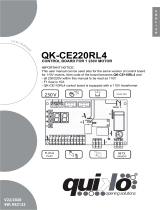 quiko QK-CE220RL4 Manuel utilisateur
quiko QK-CE220RL4 Manuel utilisateur
-
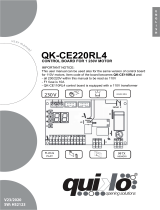 quiko QK-CE220RL4 Manuel utilisateur
quiko QK-CE220RL4 Manuel utilisateur
-
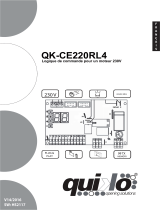 quiko QK-CE220RL4 Manuel utilisateur
quiko QK-CE220RL4 Manuel utilisateur
-
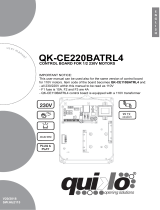 quiko QK-CE220BATRL4 Manuel utilisateur
quiko QK-CE220BATRL4 Manuel utilisateur
-
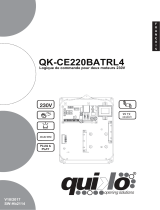 quiko QK-CE220BATRL4 Manuel utilisateur
quiko QK-CE220BATRL4 Manuel utilisateur
-
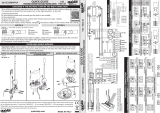 quiko QK-CE220BATRL4 Guide de démarrage rapide
quiko QK-CE220BATRL4 Guide de démarrage rapide
-
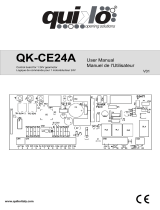 quiko QK-CE24A Manuel utilisateur
quiko QK-CE24A Manuel utilisateur
-
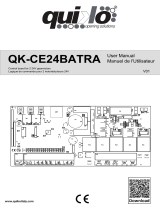 quiko QK-CE24BATRA Manuel utilisateur
quiko QK-CE24BATRA Manuel utilisateur
-
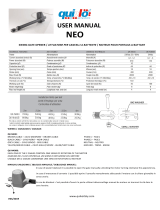 quiko Neo Manuel utilisateur
quiko Neo Manuel utilisateur
-
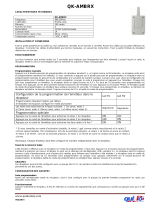 quiko QK-AMBRX Manuel utilisateur
quiko QK-AMBRX Manuel utilisateur
Autres documents
-
CAME FAST 24V Guide d'installation
-
CAME ZLX24SA-ZLX24SR Guide d'installation
-
V2 Elettronica V2 Forteco 2500-I Le manuel du propriétaire
-
V2 Elettronica V2 Ayros Le manuel du propriétaire
-
BFT RIGEL 5 Installation and User Manual
-
Telcoma T101 Le manuel du propriétaire
-
CAME ZL19N Guide d'installation
-
CAME FLY PB1100 Manuel utilisateur
-
Telcoma T124 Le manuel du propriétaire










































